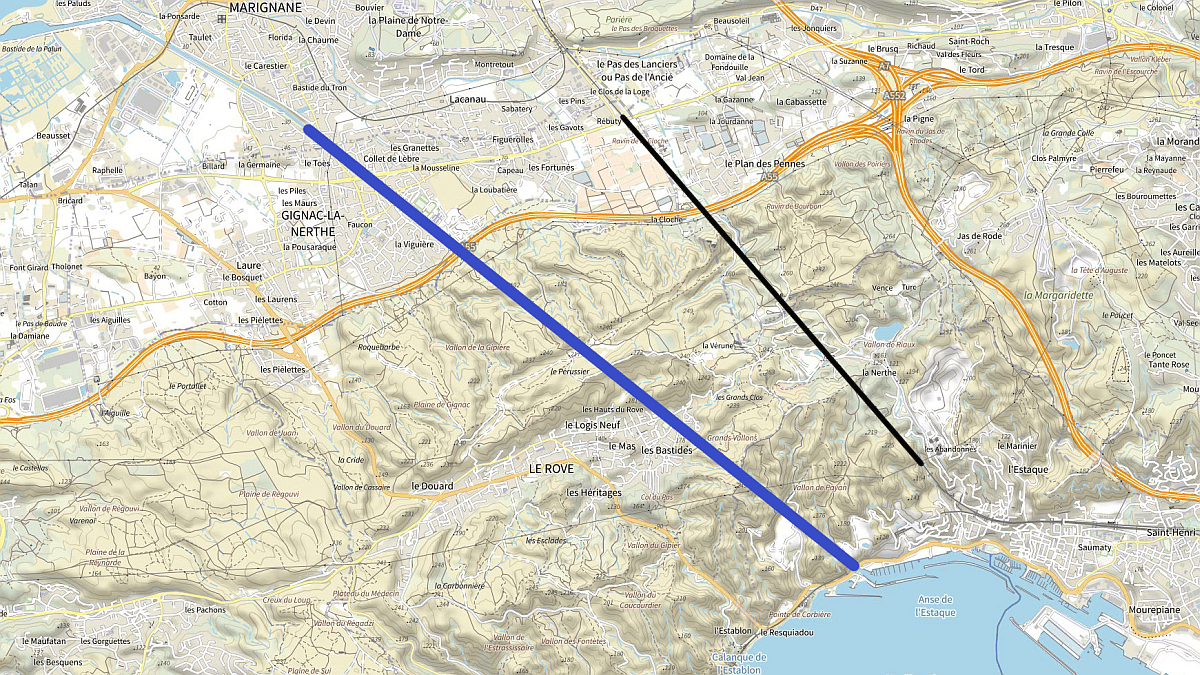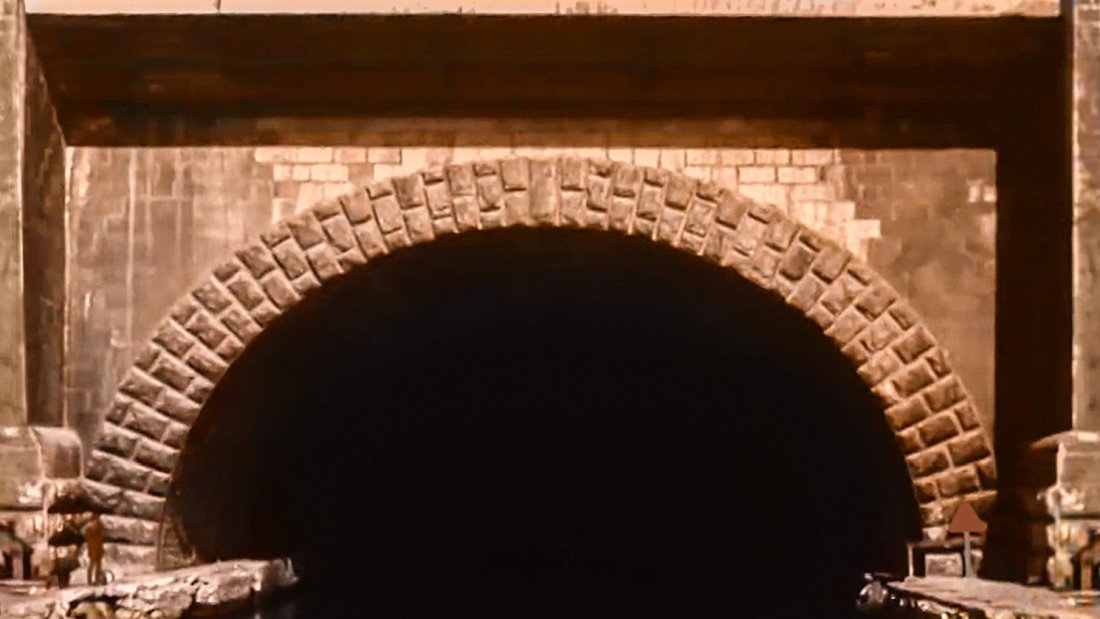This is a special feature covering the Rove tunnel in France. This follows on from the recent Railways and Canal Tunnels series. Rove tunnel deserves a whole post because there’s very little in the way of English websites or blogs featuring this gigantic tunnel. The enormous subterranean waterway system, which was built for inland transportation between Marseille and the Rhône, is billed as one of the greatest tunnels ever built. Its astounding height and width are unmatched by other tunnels. A huge network of railways, including both standard gauge and narrow gauge lines, was used extensively in its construction. The construction method eliminated the need to build a large number of shafts. World War One and the extremely challenging terrain that needed to be tunnelled through delayed down the tunnel’s construction, which took seventeen years. The tunnel was formally inaugurated on 25th April 1927 by the French president.
This feature in its original version missed the actual anniversary date of the opening of the Rove tunnel by just four days! It was published on 29th April 2025. A revised format has been used for this reworking of the partially unfinished Rove tunnel series. Of those two were in fact published however they were just too long. By the way, the tunnel will celebrate its 100th anniversary in 2027 – just two years away.
France has quite a number of canal tunnels including four very long ones. That at Riqueval is the classic longest canal tunnel in the world at 5760m. The UK’s own longest canal tunnel at Standedge is somewhat shorter at 4989 metres, however it just about beat the next longest in France which was Mauvages at 4889m. Thus Standedge remained the second longest canal tunnel in the world until 1927 when France opened a much longer tunnel – the Souterrain or Tunnel du Rove with a length of 4.4 miles or 7.1 km. The name comes from the fact the tunnel passes under the town of Le Rove.

Rove south eastern portal and Rove north western portal from Wikipedia 1/Wikipedia 2.
In terms of size, the Rove tunnel was massive and it was said several double track railway tunnels would fit inside it. The huge size was of course because the intent was to permit quite substantial barges and even small ships. It seems even the biggest tugs in the Marseille area could use the Rove tunnel with their chimneys retracted.
Perhaps the most unique aspect of the Rove tunnel is not its size, but the fact its the only one of its kind in the world to be built at sea level. Earlier proposals for the canal (1841) had entailed a substantial number of locks and a shorter tunnel at 50 metres above sea level. The route taken would have been approximately where the PLM’s railway tunnel the Nerthe, had been built. This was found unfeasible, thus the designs were changed to provide for a totally level canal from Marseille to Arles, where it would lock into the Rhône itself. This was easily accomplished because this is the Mediterranean, where the tidal range is low. The smallest amplitudes fortunately occur along the French shore. In many cases, the tidal range might be only a few inches, maybe it could occasionally be a foot or more, depending on the conditions.

The location of the Rove tunnel which is between the 16th Arrondissement and Gignac-la-Nerthe in the Bouches-du-Rhône region of France. The route of the canal tunnel is marked blue. For comparison the location of the nearby SNCF Nerthe tunnel is also marked. The upper part of the southern portal can be partially seen on Google Streets whilst the northern portal can be partially seen here.
Why railways and canal tunnels – what’s the relationship?
What’s so unique about a railway constructing a canal tunnel, one would wonder? As discussed in the previous sections of this series, the truth is that, with the exception of a few very small cases in France and the UK, virtually no lines were employed to construct canal tunnels. The two most common ways a canal tunnel would come into contact with a railway are either being utilised to haul barges (as was the case in several French examples) or being converted for railway usage only, which did occur in a few instances.
The Rove tunnel was no doubt the last canal tunnel ever to be built – and that with the aid of a vast railway system over a period of sixteen years. At its fullest extent the railway in the tunnel totalled somewhere around 30 kilometers in length. Hence Rove tunnel is one of a very few examples of a canal tunnel built by this method. Even so, other tunnels built with the aid of a railway used these as supplementary towards construction. At Rove railways were indeed the major form of transport used in its construction and every conceivable type of railway was to be seen – including passenger trains!
This is the first English language blog to feature a comprehensive work on the history and construction of the Rove tunnel. In any event it was a very labour intensive work involving huge amounts of research in a language the author doesn’t even have any grasp of – and at times it was very hard to understand certain contexts and historical data even when using Google translate.
The Marseille-Rhône Canal and its huge tunnel
In a nutshell, the reason for the Marseille-Rhône Canal was a need to expand the port of Marseille and afford onward transit directly from the port itself. The only other alternative transport routes were horse and cart or the train.

The impressively huge southern portal of the Rove tunnel near Marseilles. Image combined from two others (one historic one more recent) and colourised in sepia by the author. A figure can just be seen on the left hand side – illustrating the size of the tunnel.

Leave a Reply